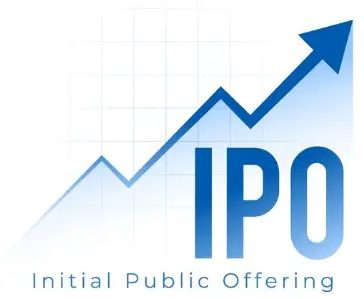United Heat Transfer IPO Analysis: A Comprehensive Guide for Investors
United Heat Transfer is poised to make its debut in the Indian SME IPO market, generating significant interest among investors. To help potential investors make informed decisions, this article delves into the company’s Red Herring Prospectus (RHP), highlighting key financial metrics and other crucial aspects.
1. IPO Details: Issue Size and Price Band
- Issue Size: United Heat Transfer aims to raise INR 30 crore through this IPO.
- Price Band: The shares are priced between INR 56 and 59 each.
- Lot Size: Investors must purchase a minimum of 2,000 shares, amounting to INR 1,18,000 per lot.
- Bidding Dates: The bidding window opens on October 22 and closes on October 24, 2024.
2. Overview, Industry, and Operations
United Heat Transfer specializes in manufacturing a variety of heat exchange equipment, including shell and tube heat exchangers, air-cooled heat exchangers, pressure vessels, and process flow skids. These products are vital for numerous applications, such as:
- Petrol and diesel engines
- Railway engines
- Maritime engines
- Heavy trucks and mining trucks
- Power generation sets
The company supports both national and multinational Original Equipment Manufacturers (OEMs) in producing high-quality heat exchangers and pressure vessels, adhering to the standards set by the Tubular Exchanger Manufacturers Association (TEMA). United Heat Transfer operates two manufacturing facilities in Nashik.
Industry Insights
The heat transfer equipment sector is crucial across various industries. The global heat exchanger market was valued at USD 1,670 crore in 2020 and is projected to reach USD 2,830 crore by 2030, growing at a CAGR of 5.5%. The demand for heat exchangers and pressure vessels is expected to rise steadily, driven by increasing industrialization.
3. Revenue and Profit Growth Trends
Understanding the financial performance of United Heat Transfer is essential for potential investors:
- Revenue: The company reported a revenue of INR 60.19 crore in FY2024, reflecting a 13.95% decline from the previous year.
- Net Profit: The net profit for FY2024 was INR 6.24 crore, showcasing a remarkable CAGR of 102% over the past three years.
- Profit Margins: The company maintained a profit margin of 10.36% for FY2024.
4. Financial Ratios to Watch
Key financial ratios provide insights into the company’s performance:
- P/E Ratio: United Heat Transfer has a P/E ratio of 12.07, comparable to industry peers.
- Return on Net Worth (RoNW): The RoNW for FY2024 is 30.62%, up from 12.70% in FY2022, indicating efficient use of shareholder funds.
- Debt to Equity Ratio: The pre-IPO debt to equity ratio stands at 1.81, which is higher than the industry average.
5. Promoter Background and Shareholding
The promoters of United Heat Transfer include Mr. Yogesh Viswanath Patil, Mr. Vivek Vishwanath Patil, Ms. Durva Yogesh Patil, and Mr. Shatanik Vivek Patil, who collectively hold 80.81% of the company’s equity.
- Experience: Mr. Yogesh Patil brings over 29 years of experience in production, commercial, and finance, while Mr. Vivek Patil has expertise in design, marketing, and administration. Ms. Durva Patil has 8 years of experience and has recently joined the company.
Post-IPO, the promoters’ shareholding will reduce to 59.20%, ensuring they retain majority control.
6. Use of IPO Proceeds
Understanding how the company plans to utilize the raised capital is crucial for assessing its growth potential:
- Debt Repayment: A portion of the IPO proceeds will be allocated to reduce existing debt of INR 5.73 crore.
- Working Capital: INR 14 crore will be directed towards enhancing working capital to support expansion plans.
- General Corporate Purposes: The remaining funds will be used for general corporate needs.
7. Threats and Challenges
Investors should be aware of potential risks:
- Contingent Liabilities: As of March 31, 2024, the company had contingent liabilities of INR 10.31 crore, which could impact its financial condition if realized.
- Customer Dependency: The top five customers contributed 67.65% of revenue in FY2024, making the company vulnerable to revenue fluctuations if any of these clients are lost.
- Export Risks: The company relies on exports to countries like France, Holland, and the USA, accounting for 8.84% of revenue in FY2024. Political conflicts could adversely affect revenue.
- Internal Competition: Uniheat Research and Solutions, a group company, operates in the same sector, potentially leading to conflicts of interest.
8. Peer Comparison
Comparing United Heat Transfer with peers like Patel Airtemp India and Anup Engineering provides valuable context:
- P/E Ratio: United Heat Transfer’s P/E ratio of 12.07 is significantly lower than Patel Airtemp India (25.87) and Anup Engineering (34.89), making it appealing for conservative investors.
- RoNW: United Heat Transfer boasts a RoNW of 30.62%, outperforming Patel Airtemp India (10.33%) and Anup Engineering (19.38%).
9. Subscription Details and Investor Categories
The IPO has specific allocations for different investor categories:
- Retail Investors: 35% of the issue is reserved for retail investors.
- Non-Institutional Investors: 15% is allocated for high-net-worth individuals (HNIs).
- Qualified Institutional Investors: The remaining 50% is reserved for institutional investors.
10. Should You Invest?
For conservative investors seeking value and stable returns, United Heat Transfer’s IPO presents a compelling opportunity. The company’s improving profitability, declining debt, and strong financial metrics make it an attractive option for long-term, low-risk portfolios.
Conversely, if you are looking for aggressive growth and higher returns, you may want to explore other options in the sector with higher P/E ratios and greater risk tolerance.
In conclusion, United Heat Transfer’s IPO offers a unique opportunity for investors to consider, balancing potential risks with promising growth prospects in a vital industry.

